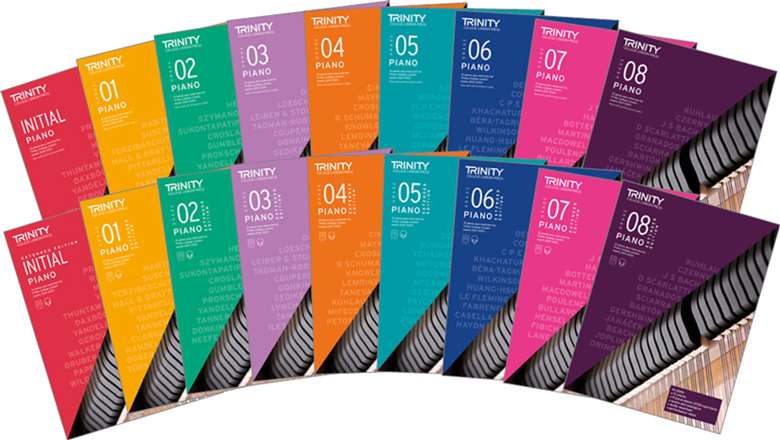Syllabus Reviews: Trinity piano syllabus
Dale Wills
Sunday, November 1, 2020
Trinity College London has published its 2021–23 piano syllabus. Dale Wills puts it through its paces to determine whether it really is ‘Your Performance, Your Choice’.

Exams have been on my mind quite a lot recently. Perhaps not surprisingly – most of us have spent some time over the last few months thinking about the purpose of exams and how well they support learning for our students. When the new Trinity College London (TCL) piano syllabus arrived in my inbox with the tagline ‘Your Performance, Your Choice’, I will confess to feeling a little bit excited.
The new syllabus involves several landmark shifts in design from a board whose watchword has always been accessibility. Much of the supporting material, and indeed a substantial amount of the repertoire, is now available online, saving both paper and cross-contamination worries.
The next significant development – at least from the perspective of those of us who teach – is the carry-over of some repertoire from one syllabus to the next. For those of us who have ever found ourselves up against the end of a syllabus, this represents a seismic shift; one which points the decision of when to enter an exam back to the student, rather than being decided by an arbitrary deadline.
This sets the tone for the new syllabus, which represents a transition towards a more liberal humanist approach to assessment in general, and one which puts the student back at the heart of the process.
In terms of physical publications, TCL is offering two versions for each exam: the standard Piano Exam Pieces Plus Exercises, which contains 12 pieces, together with the new technical work exercises; and the Extended Edition which also includes Scales and Arpeggios in hard copy, plus links to the additional nine pieces for each grade.
Both editions also contain extensive performance notes for all 12 pieces, with the extended edition also including downloadable audio for all 21 pieces. I must confess to being a bit sceptical about performance notes. As far as possible, I like my students to make decisions for themselves without too much pre-input into matters of interpretation. Add to that Frank Zappa's point that writing about music being like dancing about architecture and you have a potentially explosive cocktail.
Here is where the editors at TCL have distinguished themselves, finding a balance between guidance and didacticism. The performance notes are concise, clear, and point to only the most essential feature of each piece. The audio content, although beautifully played and expertly captured, represents a bone of contention for a lot of teachers. Certainly, at higher grades, I would encourage my students to listen to (multiple) recordings of a piece – but only in the late stages of the learning process. The recordings of the duet parts (individually!) for the duets included up to Grade 3 will doubtless prove useful.
Pushing the list of pieces up from 9 to 12 (plus additional content) represents the next step in delivering more choice to students. An even more significant step is the removal of the list barriers which have so frustrated students for – well, certainly back to when I was taking exams! From Grade 6, the pieces fall back into two lists with the first focusing on pre-20th-century ‘classics’, and the second encompassing late-19th-, 20th- and 21st-century works. While this initially feels like a pullback from a truly student-focused assessment, it does underscore the jump in standard in much the same way as the ABRSM's Grade 5 theory requirement continues to.
The real care and attention with this new syllabus, however, comes in the substance of the material. The repertoire lists have been carefully selected with inclusion and engagement at their core. Each assessment includes one piece by a Young Composer, the result of an international Young Composers’ Competition. These pieces are uniformly excellent and fit within the scaffolding for each grade with a truly astonishing sense of ease. Praise to Gilon Fox (Grade 5) and Dario Sciarra (Grade 8) in particular, from whom I hope we hear much more in the future. TCL continues to underline its commitment to composers by allowing students to include one of their own original works in their repertoire list at all levels.
Many of the criticisms of previous exam lists, from every board, has been the lack of consistency with setting levels. There is something uniquely frustrating for a teacher about seeing, for example, a previously Grade 6 piece reappear on a Grade 7 list. The new syllabus seems to be underpinned by a lot more clarity in this respect. Playing through this list, each piece felt like it was sitting within the technical demands of each band. No mean feat, given the sheer breadth of the new repertoire lists.
While some students may find the increased repertoire choice and range of test options daunting, TCL has embedded one final skill in their assessment criteria: programme building. This, more than anything else, sums up the ethos of the new syllabus – allowing students to take ownership of their exams. And for that, I can only thank you.

